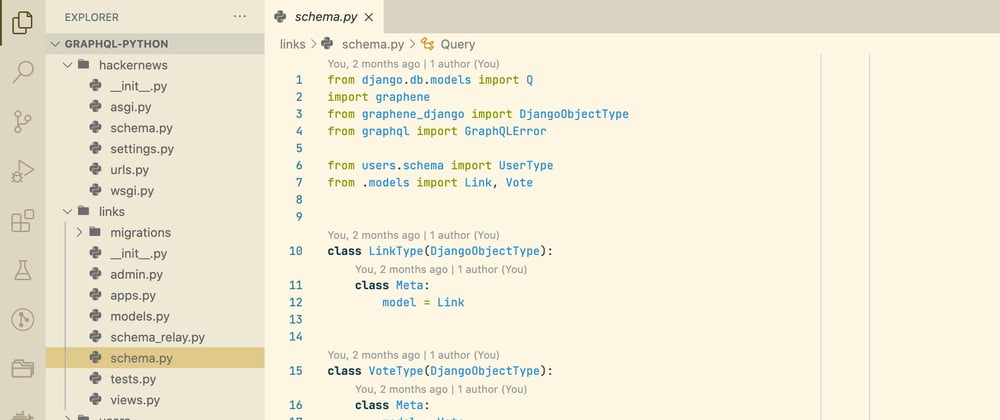TL;DR
- Use Homebrew for Python dependencies.
- Use
pyenvfor installing Python versions. - Use
virtualenvwrapperto create and manage Python virtual environments. - Use
pipxfor Python command line tools. - Use Black for Python code formatting.
Use Homebrew for Python dependencies
Most developers using macOS are probably already using Homebrew for installing tools and libraries not included with the default system. If you are not, you can find instructions for installing Homebrew here. Once you have Homebrew installed, you will need o make sure to have a few dependencies installed that are required for building CPython.
brew install openssl@1.1 readline
Use pyenv for installing Python versions
Apple does not track upstream Python releases very closely, so you should install your own Python versions so you can stay up to date. I recommend using pyenv for installing Python versions. If you wish, you can install pyenv using Homebrew.
brew install pyenv
I don't do this, though. I like to track the most recent changes to pyenv, so I use the pyenv-installer to install pyenv. Whichever method you use, make sure to follow the installation instructions for your shell and run pyenv doctor to make sure everything is working well.
Install some Python versions and set the global Python versions
I install the most recent Python 3.7 (to support the iTerm shell integration utilities), Python 3.8 (which I make the default global python3), and Python 3.9.
pyenv install 3.7.9
pyenv install 3.8.6
pyenv install 3.9.0
Next, I like to make Python 3.8 my default global python3 (and python3.8) executable, but I also like to have python3.7 and python3.9 available on my PATH.
pyenv global 3.8.6 3.7.9 3.9.0
Let's make sure everything looks good by running pyenv versions.
lgw4 at defiant in ~
❯ pyenv versions
system
* 3.7.9 (set by /Users/lgw4/.pyenv/version)
* 3.8.6 (set by /Users/lgw4/.pyenv/version)
* 3.9.0 (set by /Users/lgw4/.pyenv/version)
Looks good. Let's use pyenv which to make sure the versions are correct.
lgw4 at defiant in ~
❯ pyenv which python3
/Users/lgw4/.pyenv/versions/3.8.6/bin/python3
lgw4 at defiant in ~
❯ pyenv which python3.8
/Users/lgw4/.pyenv/versions/3.8.6/bin/python3.8
lgw4 at defiant in ~
❯ pyenv which python3.9
/Users/lgw4/.pyenv/versions/3.9.0/bin/python3.9
lgw4 at defiant in ~
❯ pyenv which python3.7
/Users/lgw4/.pyenv/versions/3.7.9/bin/python3.7
Just the way I like it.
Use virtualenvwrapper to create and manage Python virtual environments
You are using virtual environments with Python, right? These days, Python comes with a perfectly fine virtual environment implementation built in, which you can use by running python3 -m venv venv. However, I like to use virtualenvwrapper to manage my virtual environments for two reasons:
- I sometimes forget to add
venvto my.gitignorefile and might accidentally commit my virtual environment to my Git repository. - By using the
setvirtualenvprojectcommand, I can get easy directory switching when using theworkoncommand.
Use pipx for Python command line tools
If you are like me, you have a few Python command line tools that you always want available, but you don't want to install them in every virtual environment you create. That's where pipx comes in. Once installed, you have a pipx command which you can use to install your Python command line tools.
pipx install black
Let's use pipx list to see what happened.
lgw4 at defiant in ~
❯ pipx list
venvs are in /Users/lgw4/.local/pipx/venvs
apps are exposed on your $PATH at /Users/lgw4/.local/bin
package black 20.8b1, Python 3.8.6
- black
- black-primer
- blackd
pipx creates a private virtual environment for your command line tool, then makes a symbolic link for the tools in ~/.local/bin so they are available on your PATH.
lgw4 at defiant in ~
❯ which black
/Users/lgw4/.local/bin/black
Use Black for Python code formatting
I use Black to format all my Python code. Is it a perfect tool that formats everything they way I would manually? No. But it does a good job, is close enough to the PEP8 standard to not bother me, and works fast. It is also a PSF project, so I feel confident that it will be around and maintained for a long time.
References
- Brett Cannon. Why you should use
python -m pip. - Jacob Kaplan-Moss. My Python Development Environment, 2020 Edition
- Chip Warden. My Dotfiles. These files show how I make all this work in Bash and Fish shells, both on macOS and GNU/Linux.







Top comments (0)